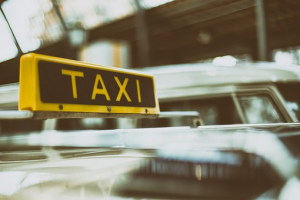Looking For Ways to Stop Losing Time and Money
Several countries have been prey to the never ending struggle of traffic and productivity. The world is losing trillions of dollars every day just because of traffic. Thus, there is a call to end congested traffic once and for all.
According to Forbes, the US lost $124 billion indirect and direct losses because of traffic. Other countries with severe traffic issues such as India, Philippines, Brazil, Mexico, etc. are also losing billions every day.
Those who commute to work have to leave their homes at an average of one hour every day just to avoid getting late. The spent fuel, energy and time while being stuck in traffic is so not worth it for people who also have families to take care, provide and nurture.
Although a lot of the workforce, especially women, shift to home-based or internet-based jobs, there is still an urgent need to develop smart mobility technology. It is going to help the government decongest city areas and find alternative routes to avoid getting trapped in a traffic jam.
This issue has tied up many government organizations for decades, and urban development planners are in the race to time to make the longed-for changes. Thankfully, the digital age is supplying answers to this, and we see a silver lining to this global malady.
Smart mobility, as the word suggests, is being able to travel and go to places using smart devices and the internet. Numerous studies have been done to integrate this into the way people commute and drive to work, and urban planners across the globe have seen four viable ways to decongest metro traffic forever.
The Audacious Helsinki Goal

One brave move made by Helsinki, Finland, is to aim to make people feel they no longer need a car to get to different places in the capital before 2025. Residents will be able to choose between private and public transport providers while giving them the option to choose the fastest and/or the cheapest way of getting to their destinations whenever and wherever they are.
This goal, however, poses another challenge for developing countries since a big part of their population relies on transportation for a living; as bus and three-wheel bike drivers. It is also going to slow down small-scale car companies who are thriving at this decade.
Despite the challenges, the possibility of smart mobility gives a silver lining to those who find themselves unhappy about how traffic affects their lives.
The Fantastic 4 Of Traffic Decongestion
Smart mobility also has its pros and cons. On-demand ride requests such as Uber and Lyft will affect the small and medium-scale taxi companies in many countries. Nonetheless, these four fantastic ideas will surely change world travel in many ways.
Ridesharing
Ridesharing is a promising solution to traffic. Offering empty car seats for people going to the same destination or the same route will remove a lot of cars from the road. Since the number of cars is reduced, it will help decongest traffic among large metros all over the world.
However, sharing a ride isn’t going to be a readily accepted norm for people nowadays since private car owners see their car space as their private space. Also, the risk of having bad experiences while riding a stranger’s car is high although services like Lyft are working to ease those concerns.
Bicycle Commuting

On the other hand, bike commuting also offers another healthy alternative to get to different destinations. Although many people prefer bike riding as a recreational exercise rather than transportation, it would decrease the number of cars going in and around the city.
One of the caveats of bicycle commuting is that not everyone is healthy enough to get to work using a bicycle. Only those who have physical capabilities and are physically ready for bike commute can get to work through it.
Another problem is that some people who travel to the city are too far to get to work after an hour of a bicycle ride. An average rider can bike only up to 15 km per hour, and that means an hour car ride of 100 km can mean almost half a day of work for them.
Car Sharing
Car sharing is also one of the ways urban planners see to lower the number of cars going in and out of the city. It allows private individuals and big companies to share their car with other people while they are at work or when they are not using it.
The downside of car sharing is that it won’t necessarily reduce the number of cars going in and out during peak hours since that is the time when almost everyone will be inside their vehicles. Only large transportation companies who have many cars to “rent” will be able to profit from this.
On-Demand Ride Services
On-demand ride services such as Uber and Lyft, allow people to offer their personal vehicles as pre-arranged transportation services. Using GPS and mobile app technologies can turn ordinary drivers into competent transportation service contractors.
However, this technology doesn’t guarantee that the traffic situation in populous metros will improve.
Takeaway
Urban planners see smart mobility as an answer to the urgent need for saving cities and urban commuters the hassle of congested roads and traffic. Although traffic congestion is still present, the upcoming decade promises progress about the future of commuting and transportation.
Related Stories You Might Enjoy:
10 Best Car Sharing Programs
New Autonomous Cars and Connected Mobility
News: Ford eMobility Moves

2 thoughts on “News: What You Need To Know About Smart Mobility”